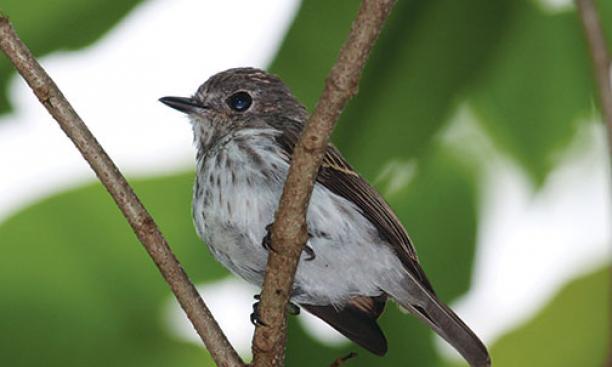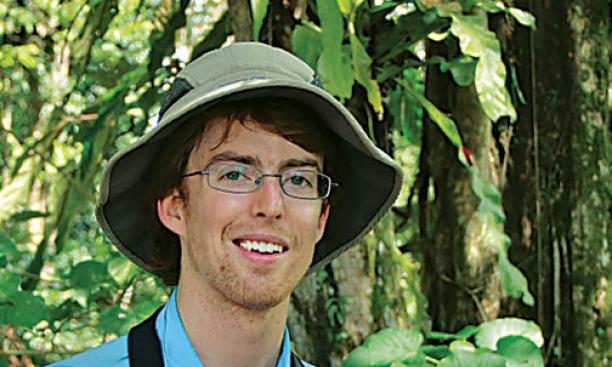


A Princeton researcher has something to tweet about: He and his collaborators have identified a new bird species, the Sulawesi streaked flycatcher (Muscicapa sodhii).
Researchers estimate that 98 percent of the world’s bird species have been discovered, says J. Berton C. Harris, a postdoctoral fellow in the Woodrow Wilson School’s Program in Science, Technology, and Environmental Policy. He is a co-author, with researchers from Michigan State University and the Indonesian Institute of Sciences, of a November PLOS One report on the discovery. “Finding a new species is quite rare,” Harris says.
Distinguished by its mottled throat and short wings, the bird first was found in 1997 in the forested lowlands on the Indonesian island of Sulawesi. The bird’s distinctive plumage, body structure, song, and genetics are markedly different than those of other flycatchers, proving it is a new species. It has survived in an area degraded by cacao plantations and currently is not at risk for extinction, according to the researchers.
The Latin name the team gave the bird pays homage to the late ecologist and ornithologist Navjot Sodhi, who was Harris’ mentor and a professor at the National University of Singapore.
“The discovery of this previously unknown bird demonstrates once again how much we have yet to learn about the biodiversity of this planet and, especially, the biodiversity of the tropics,” says David Wilcove, a professor of ecology and evolutionary biology.
